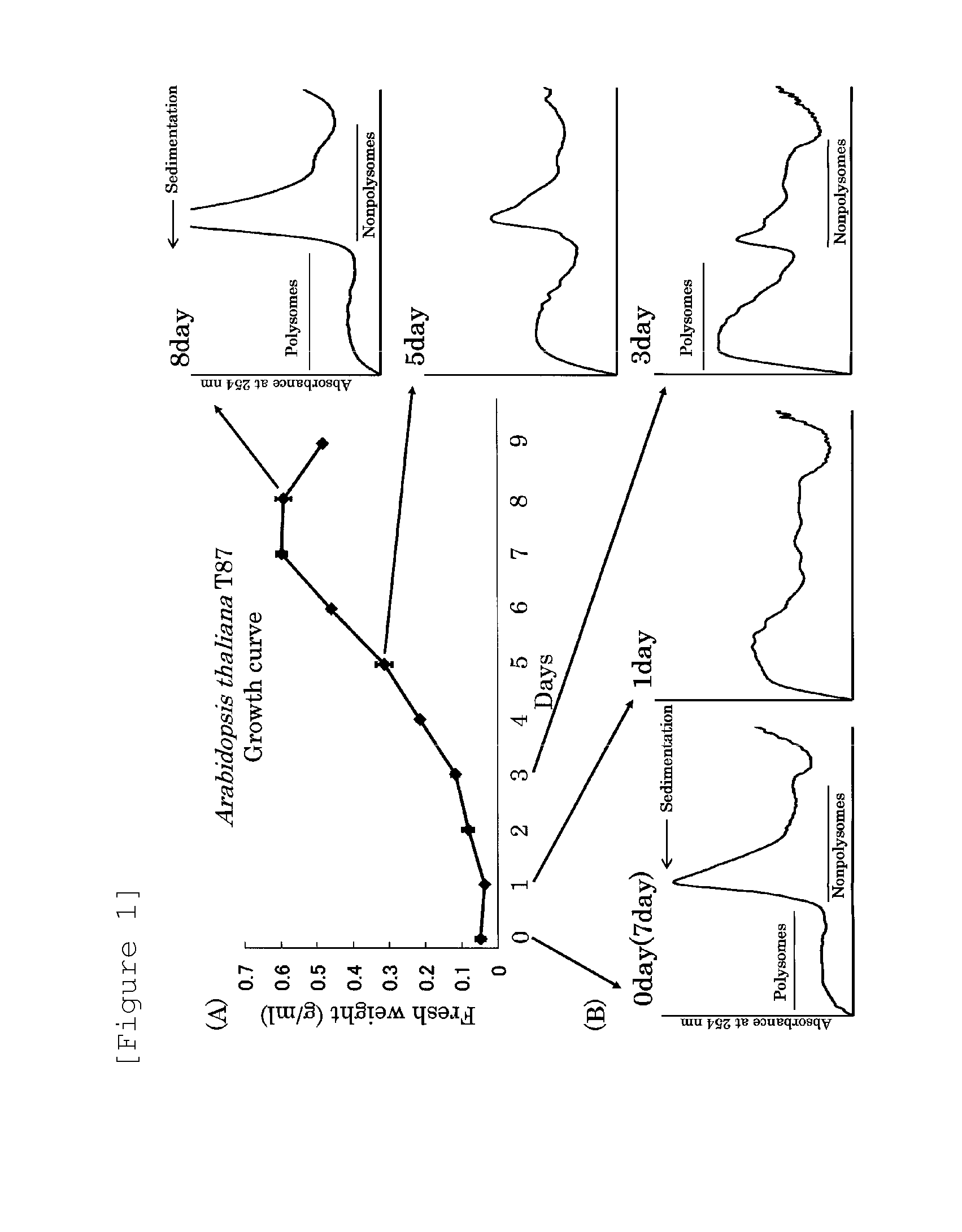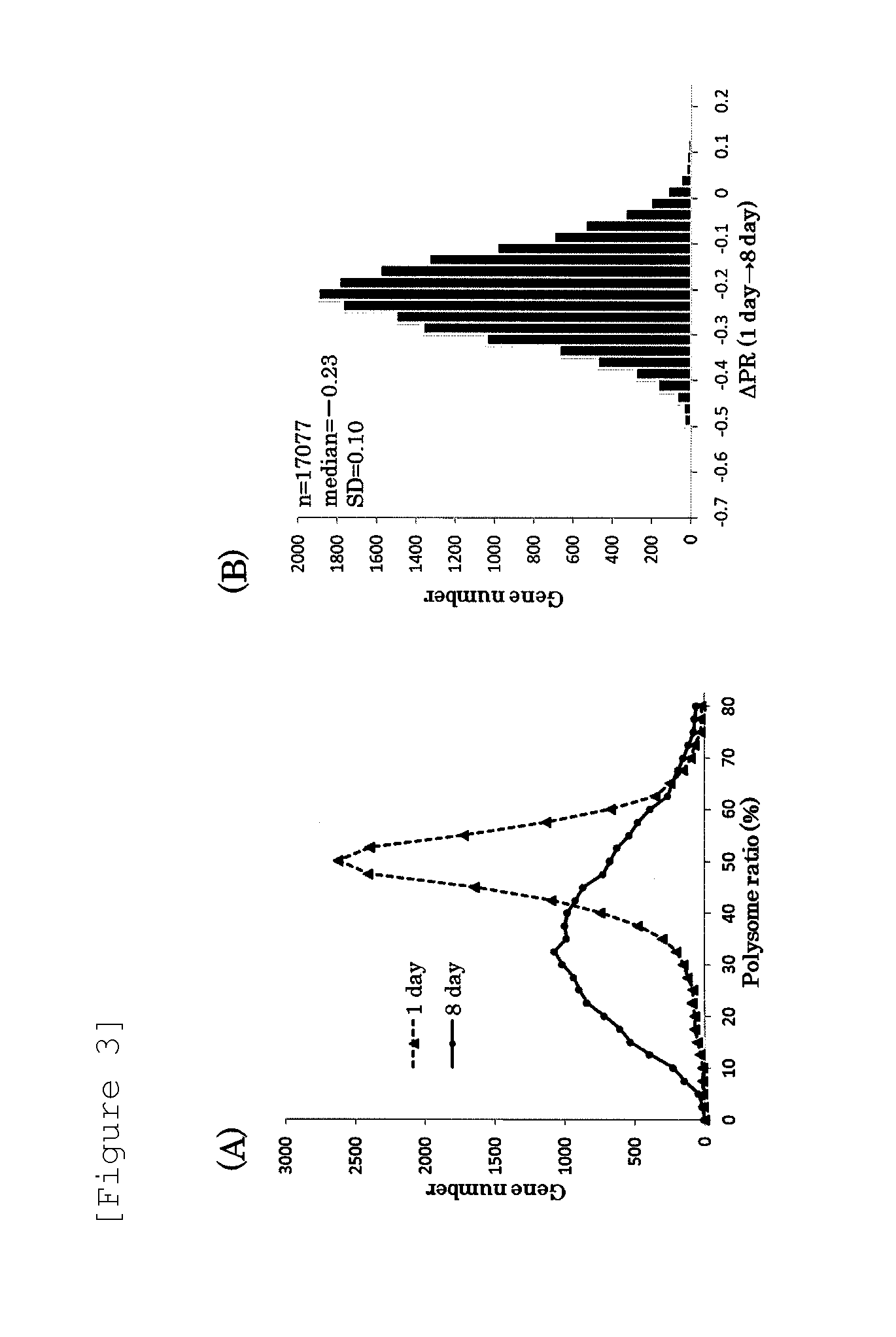Protein production method using transformed plant cells
a plant cell and protein technology, applied in the field of protein production methods, can solve the problems of reducing the production amount of useful proteins intended for production, and achieve the effect of efficiently producing a target protein and not reducing the efficiency of mrna-protein translation
- Summary
- Abstract
- Description
- Claims
- Application Information
AI Technical Summary
Benefits of technology
Problems solved by technology
Method used
Image
Examples
examples
[0080]The present invention is described below in more detail. However, the scope of the invention is not limited to the following Examples. The materials and techniques used in the experiments are first described in detail, followed by specific descriptions of the contents of the experiments and the results thereof.
Cultured Plant Cells
[0081]The following cultured plant cells were used for the study below.
Arabidopsis Thaliana T87
[0082]Arabidopsis thaliana cultured cells (Arabidopsis thaliana T87) (Axelos et al., 1992) that were supplied from the Plant Cell Bank in Riken Gene Bank were used. Culture was performed under the following conditions: 22° C., 18-hour light period / 6-hour dark period, and a stirring rate of 120 rpm (SLK-3-FS, Nippon Medical & Chemical Instruments Co., Ltd.). 95 mL of modified LS medium (Nagata, 1992) was placed in a 300-mL Erlenmeyer flask and used. Every week, 4 mL of cells that entered stationary phase were transplanted onto 95 mL of fresh medium and subcul...
PUM
| Property | Measurement | Unit |
|---|---|---|
| Stress optical coefficient | aaaaa | aaaaa |
Abstract
Description
Claims
Application Information
 Login to View More
Login to View More - R&D
- Intellectual Property
- Life Sciences
- Materials
- Tech Scout
- Unparalleled Data Quality
- Higher Quality Content
- 60% Fewer Hallucinations
Browse by: Latest US Patents, China's latest patents, Technical Efficacy Thesaurus, Application Domain, Technology Topic, Popular Technical Reports.
© 2025 PatSnap. All rights reserved.Legal|Privacy policy|Modern Slavery Act Transparency Statement|Sitemap|About US| Contact US: help@patsnap.com



